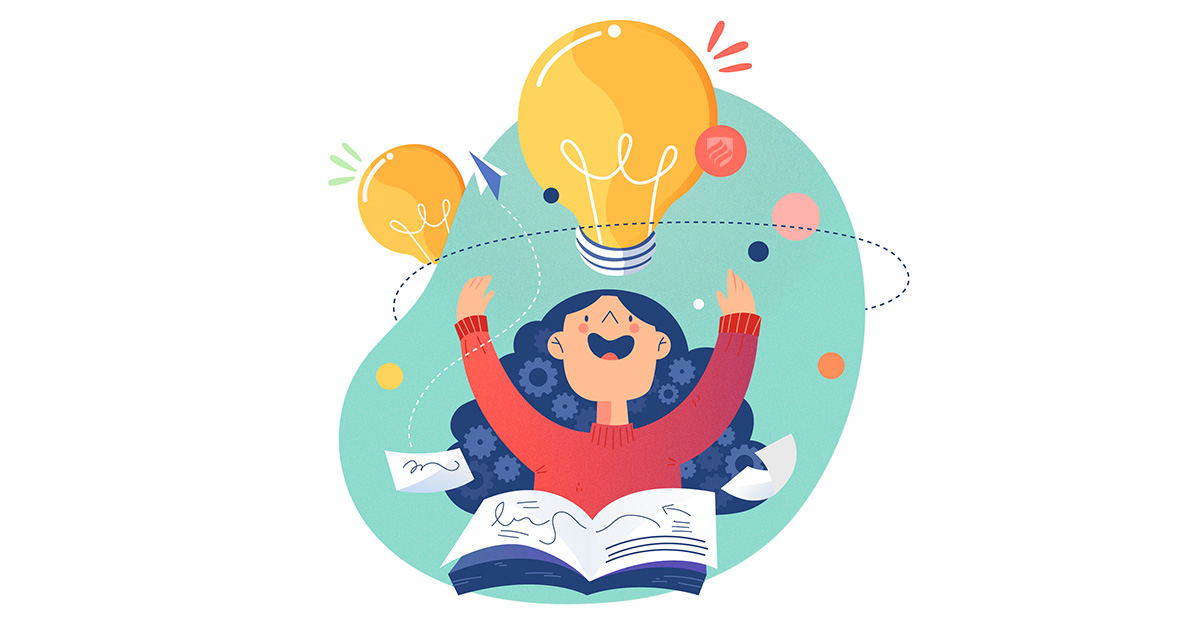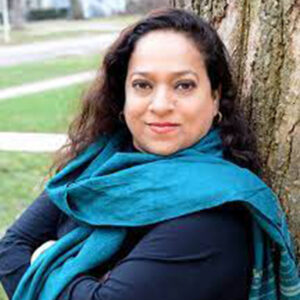The Science of Reading
Chalking the Line | BY SAMINA HADI-TABASSUM | 10 MIN READ

The reading wars have been going on for several decades and we are now seeing a return with the “science of reading” legislation that has been enacted in over two dozen states (Goldenberg, 2020).
The current wave of legislation is asking us to return to a core of instruction based in phonics and phonological awareness and teaching students to sound out words as opposed to the use of a balanced literacy approach and its emphasis on word walls, leveled books, guided reading groups and encouraging children to guess what a word might be using cues rather than decoding it precisely. The reading instruction should focus on a systematic teaching of phonics, understanding essential vocabulary, and the comprehension of content knowledge such as non-fiction texts in science and social studies. The emphasis is on the child being able to connect sounds to letters, decode which letters make which sounds in that specific word order, blend the sounds together smoothly, and then step back and see the word as a whole.
The science of reading debate is focused on how we should teach children to read and whether teachers have the knowledge and skills to help children who struggle with reading; however, the debate also creates a false binary and pits phonics instruction against whole language instruction (Yaden, Reinking, & Smagorinsky, 2021). It argues that reading instruction should be explicit, repetitive, and systematic since the act of reading is how we access information in our society and thus has a lasting impact on a child’s life.
What is the Science of Reading?
The “science” part of the debate is based on the current surge in cognitive science and neuroscience research. This research focuses on showing us what is happening in our brain as we try to read and how all of us undergo the same processes as we read. The one exception to this is for those who have dyslexia, for example, which can cause difficulties (Dehaene, 2009). The science of reading legislation is also being pushed forward by political activists. These include the parents of children diagnosed with dyslexia as well as disenfranchised communities in which mostly Black and Latinx students are leaving school with low levels of literacy (Shanahan, 2020).
Bilingual education advocates also fear that the science of reading platform is pushing for more direct instruction of the English language as opposed to teaching a child to read first in their home language. English is also an opaque language in which there is no direct one-to-one correspondence between letters and sounds. Because of this, we have words like “freight” with seven letters and four sounds. In contrast, languages like Italian and Spanish have transparency so that each letter makes a distinct sound. A word with four letters will have four sounds such as “mano” (hand) in Spanish (Share, 2021). Yet, researchers continue to reinforce the idea that 80% of children who fail to read by the third grade never really catch up. They continue to fail and drop out of school as the reading texts become more complex (Miles & Stipek, 2006).
All of these issues are pushing us to ask how well reading is taught in schools and how schools of education are preparing future educators to teach reading with struggling students. Meanwhile, states are also trying to develop literacy plans and literacy frameworks to guide school districts on best practices and create a universal approach toward curriculum and instruction.
Instructional Reading Strategies
From a research-based lens, it is challenging to determine what methods of instruction are best when teaching a child to read. One has to consider so many variables, such as the child’s individual traits (levels of literacy at home, multiple languages, learning disabilities such as memory, spatial and visual reasoning, metalinguistic awareness, motivation and confidence in reading) as well the pedagogy of the classroom (basal readers, scripted curriculum, book choices, phonics and phonemic awareness primers) and the teacher’s own background and expertise (levels of education, years of experience, professional development). We do know that a singular approach to reading instruction does not catch all the different types of reading styles and student backgrounds; rather, a multi-prong approach can start the day with phonics, phonemic awareness and phonological awareness; move toward reading high-quality books aloud to students and posing critical thinking questions after the reading; small-group work at tables for students to learn specific interventions that can help them become fluent readers as well as better comprehend various texts; and integrate writing in purposeful ways so students connect what they are reading with a written response as well as see themselves as writers of fiction, poetry and non-fiction.
Teaching all children in the classroom to read is quite complex and the curriculum should reflect that degree of complexity. At the same time, research studies are often plagued with “overgeneralization, misinterpretation, or premature application of basic research” that can make it challenging to find one form of instruction that works for all children, especially when earlier studies are overturned by new studies since it is hard to compare different groups of teachers, students and classrooms across these studies (Shanahan, 2020).
Reading Research
As a former classroom teacher and literacy specialist, I had a folder for each student profile in which I assessed students and determined where they were in their reading ability. This assessment included items such as their fluency rates and how many words they could read per minute, decoding skills and learning to sound out unknown words, the comprehension of what they just read and the ability to answer questions from the text, vocabulary knowledge both from the text and outside of the text and the writing response to what they were reading. Suffice to say it was an overwhelming amount of data! Some students did decode words letter by letter and from left to right while others could look at the whole word and sound it out correctly without the rote decoding skill. At the same time, we do have a strong body of research that points to the fact that students who struggle with reading often need more systematic instruction on decoding and learning how to pronounce unknown words as well as master common, high frequency words that do not look like what they sound (Duke & Cartwright, 2019). There is also research that focuses on eyesight and decoding and the importance of tracking text with coordination between visual, cognitive and oral processes that interact when reading. Research also shows that students who struggle with reading have less efficient eye movement and need to be trained on how to track text (Murphy, 2017).
Reading Assessments
Assessment also needs to be discussed in the science of reading debate and how often we assess an individual student reading aloud to us. As a professor of education, I provide professional development on conducting “running records” of children reading aloud at least 100 words, examining how often they are making errors and what kind, whether they are learning to self-correct based on the context of the reading exercise, and how well they were able to comprehend what they just read through questions at the end (Chall, 1996).
We should assess multilingual children in their native languages as well as English to determine whether there is a language difference and whether their reading ability varies from one language to another. Based on the errors a child makes when reading (i.e., replacing the word “butcher” with “grocer” because they have similar meanings), an instructional reading coach can work with individual students and small groups of students to get them to use specific strategies, interventions and methods to self-correct and/or to use cognitive devices to help them remember what they just read such as stopping after each page and drawing its meaning. Children who struggle to read benefit from one-on-one tutoring with a skilled instructional coach who can help provide individualized interventions such as enhancing visual perception (i.e., Does that say “butcher” or “grocer? Can you go back and see what sound that word starts with?) and visuomotor processing (i.e., That is a letter /b/ and do you know what sound that letter makes at the start of a word like “ball”?).
In the end, a classroom teacher needs to identify the type of reader a student is and how they learn to read best, whether it is through a visual method or an auditory method and what modality works better—this task can be daunting when the class size is large and this approach cannot be the sole driver in determining the reading curriculum and instruction (Rogowsky, Calhoun, & Tallal, 2020).
How to Move Forward
What the science of reading debate is failing to acknowledge is the digital literacy of Generation Z and the younger generations to come who are fixated with their phones, iPads and computers and are challenged to sustain reading stamina with a printed book in their hand. The focus should perhaps be instead on how to motivate students who can read to sustain their interest and eventually confidence in reading, as well as how to support the smaller percentage of students who need systematic instruction in phonics and decoding. The research also leaves out secondary students in high school who struggle to read and what type of curriculum and instruction is developmentally appropriate since many decoding programs target young children. In the end, we do know that children need to learn to read by the third grade as well as read to learn in our information society which requires us to decode words but also to think critically about what we just read.
Be Part of the Solution
Elmhurst University has several graduate-level programs in Education. These master’s and endorsement programs are aimed at helping teachers increase their leadership skills and take the next step in a career in education.
Want to learn more? Request more information about Elmhurst University below.


















